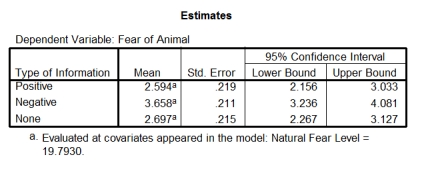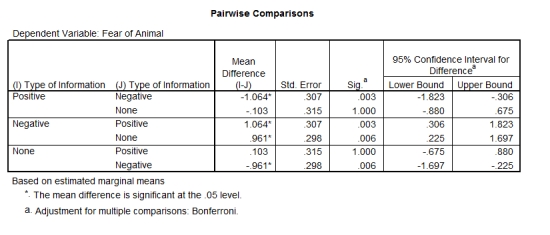Multiple Choice
A psychologist was interested in the effects of different fear information on children's beliefs about an animal. Three groups of children were shown a picture of an animal that they had never seen before (a quoll) . Then one group was told a negative story (in which the quoll is described as a vicious, disease-ridden bundle of nastiness that eats children's brains) , one group a positive story (in which the quoll is described as a harmless, docile creature who likes nothing more than to be stroked) , and a final group weren't told a story at all. After the story children rated how scared they would be if they met a quoll, on a scale ranging from 1 (not at all scared) to 5 (very scared indeed) . To account for the natural anxiousness of each child, a questionnaire measure of trait anxiety was given to the children and used in the analysis.
-The SPSS output is below. What analysis has been used? 


A) Independent analysis of variance
B) Repeated-measures analysis of variance
C) Analysis of covariance
D) Mixed analysis of variance
Correct Answer:

Verified
Correct Answer:
Verified
Q2: Imagine we wanted to investigate the effects
Q3: A music teacher had noticed that some
Q4: Which of the following assumptions must be
Q5: Which of the following best describes how
Q6: Which of the following sentences best describes
Q7: Imagine we wanted to investigate the effects
Q8: Imagine we wanted to compare a group
Q9: A music teacher had noticed that some
Q10: A music teacher had noticed that some
Q11: Imagine we wanted to investigate the effects